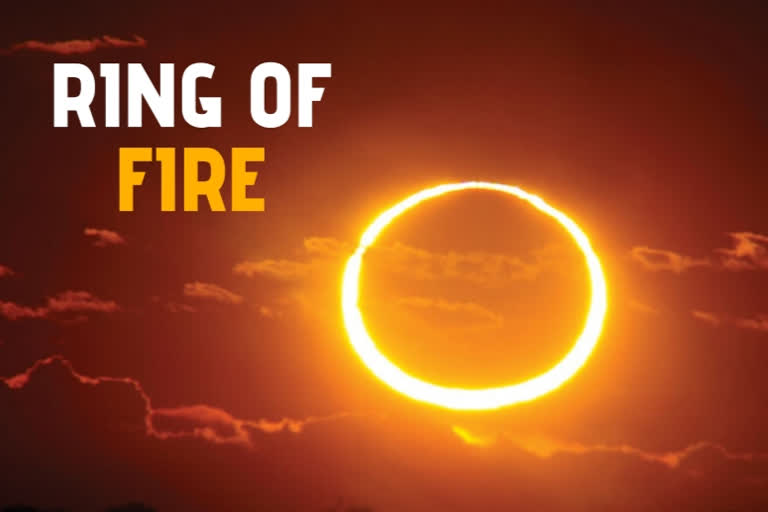New Delhi:Along with the rest of the World, many places in India will be able to witness a solar eclipse on Thursday, which is the last solar eclipse of the decade.
The eclipse, which will be seen as ring of fire around the sun, and in some parts as partial solar eclipse, will make its first appearance in India at Cheruvathur in Kerala's Kasargod district.
Cheruvathur is one of the three places in the world where eclipses are most clearly visible. The district administration has provided a wide range of facilities for the public to monitor the eclipse.
A solar eclipse occurs when the Moon passes between Earth and the Sun, thereby totally or partly obscuring the Sun for a viewer on Earth. An annular solar eclipse takes place when the moons apparent diameter is smaller than that of the Suns and blocks most of the Suns light. This causes the Sun to look like a ring (annulus) of fire, Debiprosad Duari, the Director, Research and Academic of MP Birla Institute of Fundamental Research, MP Birla Planetarium, said.
Thursday's eclipse will be visible in Saudi Arabia, Qatar, United Arab Emirates, Oman, India, Sri Lanka, Malaysia, Indonesia, Singapore, Northern Mariana Islands, and Guam. Population centers in the path of the annularity include Udhagamandalam, Kozhikode, Coimbatore, Jaffna, Trincomalee, Singapore, Singkawang and Guam, Duari said.
Read: Solar eclipse forces BCCI to change Ranji Trophy match timings
In the Indian sub-continent, the annularity phases will be seen within a narrow path grazing the southern Indian peninsula through Karnataka, Kerala and Tamil Nadu before crossing the Bay of Bengal for northern Sri Lanka.
The people of the southern part of the country will be fortunate to see a greater part of the partial solar eclipse because of the geometry of the eclipse path. But every Indian will get an opportunity to see at least a partial eclipse. In India the maximum duration of the annularity phases will be just over 3 minutes, he said.
